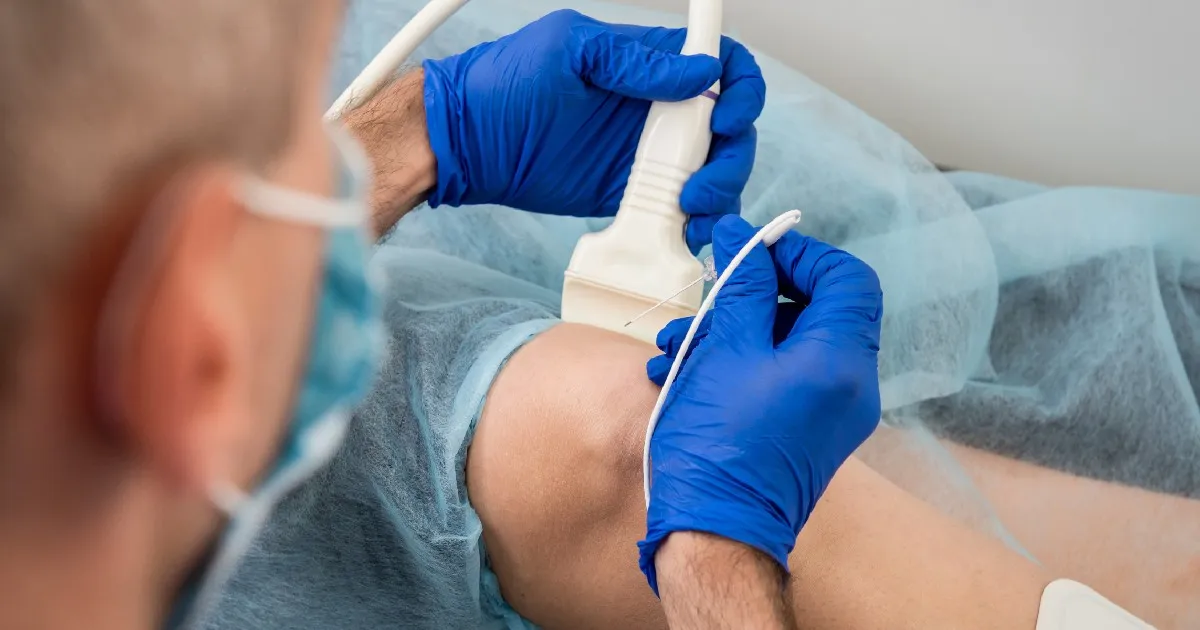Table of Contents
Persistent pain in the lower back, hips, or legs can make daily activities—like working, walking, or even sitting—feel challenging. For many, the source of this discomfort is the sacroiliac (SI) joints, which connect the spine to the pelvis and play a key role in stability and movement.
When these joints aren’t working properly, pain can be challenging to manage with basic remedies. That’s where targeted care, such as SI joint injections, can help. At Alta Pain Physicians, patients receive precise treatments designed to relieve discomfort and identify the trustworthy source of their pain—an essential step toward lasting relief.
If you’re looking for effective SI joint pain relief or exploring minimally invasive options, here’s what you need to know about sacroiliac joint dysfunction and the treatments that can make a difference.
Understanding Sacroiliac Joint Dysfunction
The sacroiliac joints connect the sacrum (the triangular bone at the base of your spine) to the pelvis. Even though they don’t move much, these joints are vital in supporting your upper body’s weight and distributing it evenly into your legs.
Sacroiliac joint dysfunction occurs when these joints move too little (hypomobility) or too much (hypermobility). Both scenarios can cause instability and pain. Symptoms often mimic other common conditions, such as a herniated disc or sciatica, which can make SI joint dysfunction tricky to diagnose.
Common Symptoms Include:
- Lower back discomfort worsens while standing, walking, or climbing stairs.
- Pain in the buttocks, hips, or thighs
- Lower-back stiffness or limited range of motion
- Discomfort when transitioning from sitting to standing
- Pain that radiates into the legs but doesn’t usually extend past the knees
Because of the overlap in symptoms with other spinal and hip issues, an accurate diagnosis is critical. That’s why many specialists turn to injections for SI joint dysfunction—not only as a treatment but also as a diagnostic tool.
How SI Joint Injections Work
When conservative methods like rest, physical therapy, or over-the-counter medication aren’t enough, sacroiliac joint steroid injections may be recommended. These injections are performed under X-ray or ultrasound guidance to ensure precise placement of drugs into the joint.
What the Procedure Involves:
- Preparation – The area is cleaned and numbed with a local anesthetic.
- Guided Injection – Using imaging technology, the provider carefully inserts a thin needle into the SI joint.
- Medication Delivery – A combination of an anesthetic (for immediate relief) and a corticosteroid (to reduce inflammation) is injected.
- Observation – Patients are monitored briefly afterward, then can usually go home the same day.
The process takes about 20–30 minutes, making it a minimally invasive joint injection option with minimal downtime. Some people feel noticeable pain relief within hours, while others see gradual improvement over several days as the steroid reduces inflammation.
Why Treat SI Joint Dysfunction Early
Ignoring sacroiliac joint pain doesn’t just mean living with discomfort—it can also lead to compensatory changes in movement that strain other parts of the body, including the hips and lumbar spine. Early intervention with SI joint inflammation therapy helps break the cycle of pain and supports long-term mobility.
Key Benefits of Early Treatment:
- Prevent worsening pain: Avoid letting minor stiffness develop into chronic discomfort.
- Stay active: Maintaining mobility supports overall health and well-being.
- Identify the actual cause: Injections can confirm whether the SI joint is the problem, preventing unnecessary treatments for unrelated conditions.
- Support physical therapy: With pain reduced, patients can engage more fully in strengthening and mobility exercises.
Benefits of SI Joint Injections
For those struggling with persistent pain, SI joint injections in Sandy and Bountiful, UT provide several clear advantages:
- Targeted Relief – Medication goes directly into the inflamed joint, unlike oral medications that affect the entire body.
- Diagnostic Value – If the injection relieves pain, it confirms the SI joint is the source of the issue.
- Minimally Invasive – No incisions, minimal downtime, and quick recovery.
- Fast Results – Some patients experience near-immediate pain relief.
- Longer-Lasting Comfort – Relief can last several weeks to months, depending on the individual.
- Improved Daily Function – Easier to walk, sit, and perform daily tasks without constant pain.
- Supports Rehabilitation – By reducing pain, patients can engage more fully in physical therapy and exercise.
For many, these injections are not just a treatment—they’re a bridge back to normal activities and a better quality of life.
Who Can Benefit Most from SI Joint Injections?
While every patient’s situation is unique, SI joint injections are often recommended for people who:
- Experience persistent lower back or buttock pain that hasn’t improved with conservative measures.
- Experiences pain that worsens with activities such as climbing stairs, standing for extended periods, or transitioning from sitting to standing.
- Suffer from arthritis-related SI joint inflammation.
- Have sustained trauma or injury affecting the pelvis or lower back.
- Want a non-surgical, minimally invasive treatment option before considering more advanced procedures.
Patients of many age groups can benefit, but the treatment is particularly valuable for adults who want to remain active and avoid the risks or downtime associated with surgery.
Other Supportive Treatments for SI Joint Dysfunction
At Alta Pain Physicians, care doesn’t end with injections. Providers often combine treatments for a more comprehensive approach. Depending on the patient’s needs, this may include:
- Physical therapy – Strengthening and stabilizing surrounding muscles to reduce joint strain.
- Lifestyle guidance – Recommendations on posture, movement, and activity modifications.
- Other injection therapies – Such as epidural injections, if pain involves multiple areas of the spine.
This holistic approach ensures patients receive care that addresses both immediate pain and long-term function.
Taking the Next Step Toward Relief
Living with sacroiliac joint dysfunction can make everyday tasks unnecessarily difficult. Fortunately, you don’t have to settle for discomfort or uncertainty about what’s causing your pain. With the expertise of Alta Pain Physicians, you can explore safe, effective, and minimally invasive options to move toward lasting relief.
If you’re ready to consider a personalized approach that helps you regain mobility and comfort, SI joint injections may be the right solution for you.Find Relief from SI Joint Pain—Book Your Injection Today




